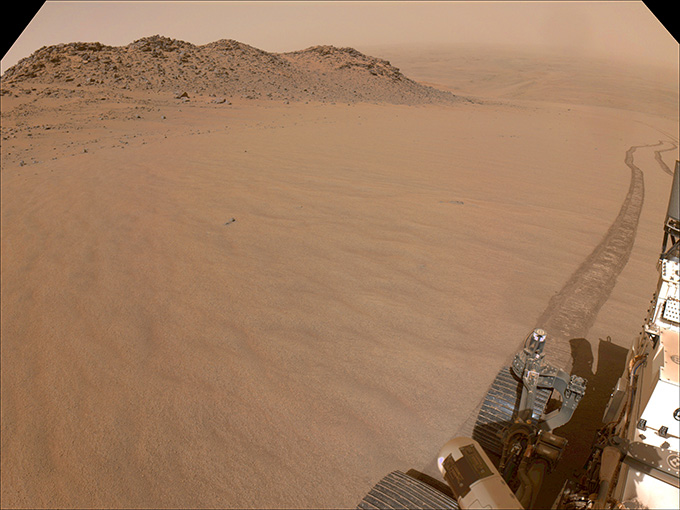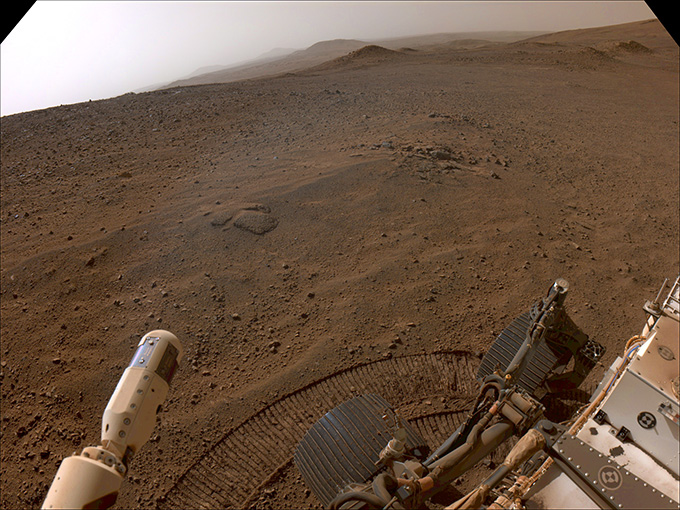Washington DC – The rover of perseverance in Mars may have stuck in the oldest rocks people have ever seen and, perhaps, evidence of a new environment that ancient Martian organisms could have lived if they ever existed.
“This is really one of the most interesting things this mission will do. It is to see rocks that formed so early in the history of the solar system,” geochemist Caltech Kenneth Farley said during a December 12 news conference in A meeting of the American geophysical union. “Almost dawn of the solar system.”
Probably the oldest rocks we’ve seen
For much of his mission, perseverance has been bowing inside Jezero Crater, trying and sampling rocks that are probably about 3.7 billion years old (Sn: 2/17/23). However, the rocks on the lips are probably much older, as they are raised by the influence that created the crater.

On December 11-After a slippery, three-month, 500-meter climb from the robotic crater-explorer floor he finally crossed that crater edge, after a few weeks studying the geology of the high zone. And all that exploration seems to have paid.
“The rocks we are exploring is now older than 4 billion years,” said Farley, who is also scientist at the March 2020 mission project who brought Rover on the planet. “These are among the oldest rocks in the solar system, and they are older than any rock that exists on Earth.” Part of the reason for this is that most of the ancient land surface is destroyed in subduction areas, where one tectonic plate sinks under another to descend into the cloak (Sn: 1/13/21).
At the top of the crater, the persistence traveled through an area known as Pico Turuino Hills, where he captured images of numerous exits. “What we found in these relatively small outputs is that the rocks are extremely diverse, and it seems that each of the hills that make up the Pico Bruising hills, have a special collection of largely glowing minerals, with some water changes,” Farley said “These are part of the early crust of Mars.”
Instruments in perseverance cannot exactly date the rocks. Instead, researchers are baseing their age ratings in their current sense of crater formation and March history. “They are our best ratings, but they are just ratings,” Farley said. “This is one of the reasons why we want to make the sample return.”
If newly encountered martyrs are really so old, they may contain information on how rock planets like Mars and land evolved in their infancy (Sn: 3/16/17). “For us to understand how rock planets behave in the first one, say, half a billion years, [we] I can’t do it from the ground, ”Farley said.
A new potential environment for martyr life
The ancient rocks were not all the perseverance found on the Pico Turuino hills. Rover also encountered rehearsals of a completely new environment habitable for possible Martian life (Sn: 7/15/24): a field of “excellent white, large -sized [stones]And the instruments in the Rover confirm that these cobblestones are pure quartz, “said Farley.” This has never been seen before “in March.
Quartz is formed in places where hot fluids circulate through the rocks, and sometimes in temperatures that are habitable. These rocks can have been formed in an environment similar to a hot spring, and we know that those environments can support life on Earth, so probably something similar once existed in March, Farley said. “This is a potentially habitable environment that is completely different from the habitable environments that insist on the Crater’s floor.”
According to Farley, the goal is to now search for quartz where it is still embedded in the Martian surface, so it can be examined. “Neither our training nor our abrader really can work so freely, [cobblestone-sized rocks]”Said Farley. “The rock would simply leave the road if we try to work on it.” Finding the easiest quartz to enter can also help researchers understand better how the mineral fits the rest of the Martian rock record.

Next stop, Witch Hazel Hill
Moving from the Pico Turuino hills, the persistence will spend the next six months exploring an area called Witch Hazel Hill. Located away from the crater, the rocks in Witch Hazel Hill should be more representatives of the wider region geology beyond, said the planetary scientist and geologist Candice Bedford of the Purdue University in West Lafayette, India, at the news conference.
Moreover, NASA’s March orbiters have already identified a wide exit of layer rocks on Witch Hazel Hill. “As geologists we love layers,” Bedford said. “For us, every stored layer is like, as we look down this is like to turn a [page in the book] of Martian history. “
#NASAs #insistence #Rover #potential #environment #Martian #life
Image Source : www.sciencenews.org